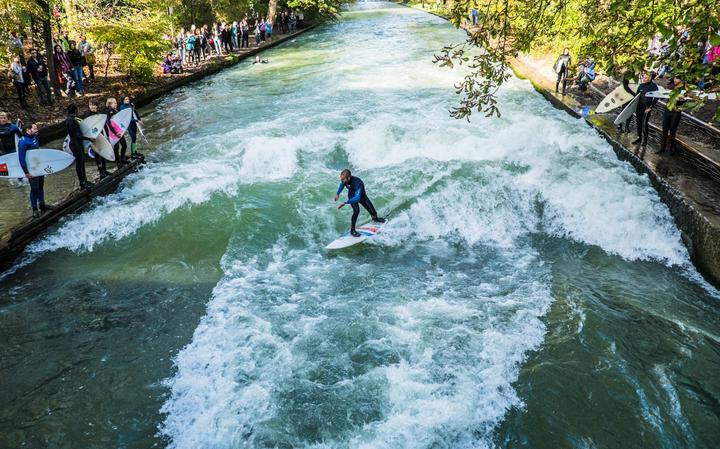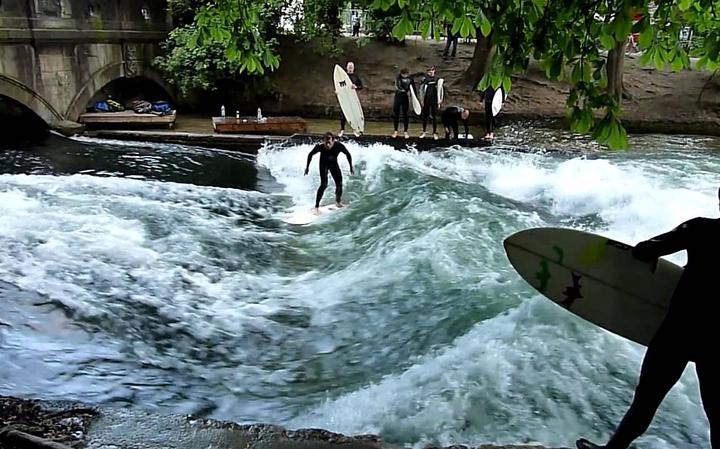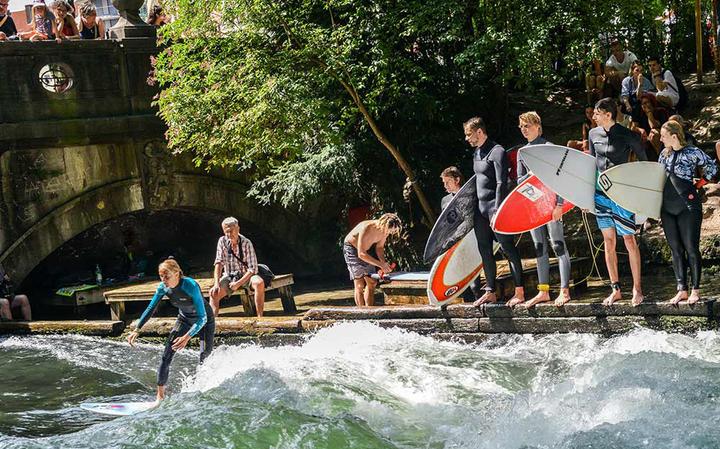Riding the wave of change on Munich’s Eisbach

UPDATE and 2nd UPDATE: Started in the 1970s and illegal until 2010, today an ingenious band of wetsuit-wearing adventurers has turned the Bavarian city into one of the world’s more unlikely surfing capitals.
A VERY IMPORTANT UPDATE: At the Eisbach, a small channel branching off the Isar River in downtown Munich, people in wetsuits line the banks, waiting patiently for their turn in one of the world’s more unlikely surfing capitals.
?
How does it feel to surf in the river?
!
It feels amazing.
Munich is 500km from the coast and more than 1,100km from any surfable ocean breaks. But an ingenious band of surfers has not let the absence of conventional waves put them off. The Bavarian capital is the birthplace of a new sport: river surfing.
In August 2012, Munich hosted the second European River Surfing Championships on an outdoor artificial wave built next to the city’s airport. It was part of a three-week Surf and Style event that was sponsored by Lufthansa and had the full backing of the local authorities – a far cry from the early days of river surfing. The sport started in the 1970s, with a small group attaching tow-ropes to the bridge that crosses the Eisbach near the southern edge of the Englischer Garten park. They would hold the ropes, try to stand up on door-like planks and attempt to emulate the ocean surfers that they had seen overseas.
It did not take long to realise that the ropes were unnecessary. The fast flowing water of the Eisbach ploughs into a deeper section of the river that barely moves at all, creating a consistent, albeit dangerous, wave effect. Signs warn inexperienced river surfers not to attempt surfing – rocks, strong currents and lack of space combine to make getting in the water perilous. Ocean surfers have to learn new skills too: there is no time to get up and let the wave approach – surfers have to be riding the second they hit the water – and movement is lateral rather than up and down the break.
Jon Ruppersberg, who repairs boards at the Santo Loco surf shop in central Munich, said river surfing requires a different type of board. “A long board is usually perfect for beginners, but because the river is so narrow, you have to start the next turn as soon as you finish the last.” Consequently, many of the boards on sale at Santo Loco are specially made by a manufacturer in Salzburg, Austria, designed to be short, relatively broad and durable. Some also have Kevlar edges to prevent damage from regularly crashing against the Eisbach’s stonewall banks.

